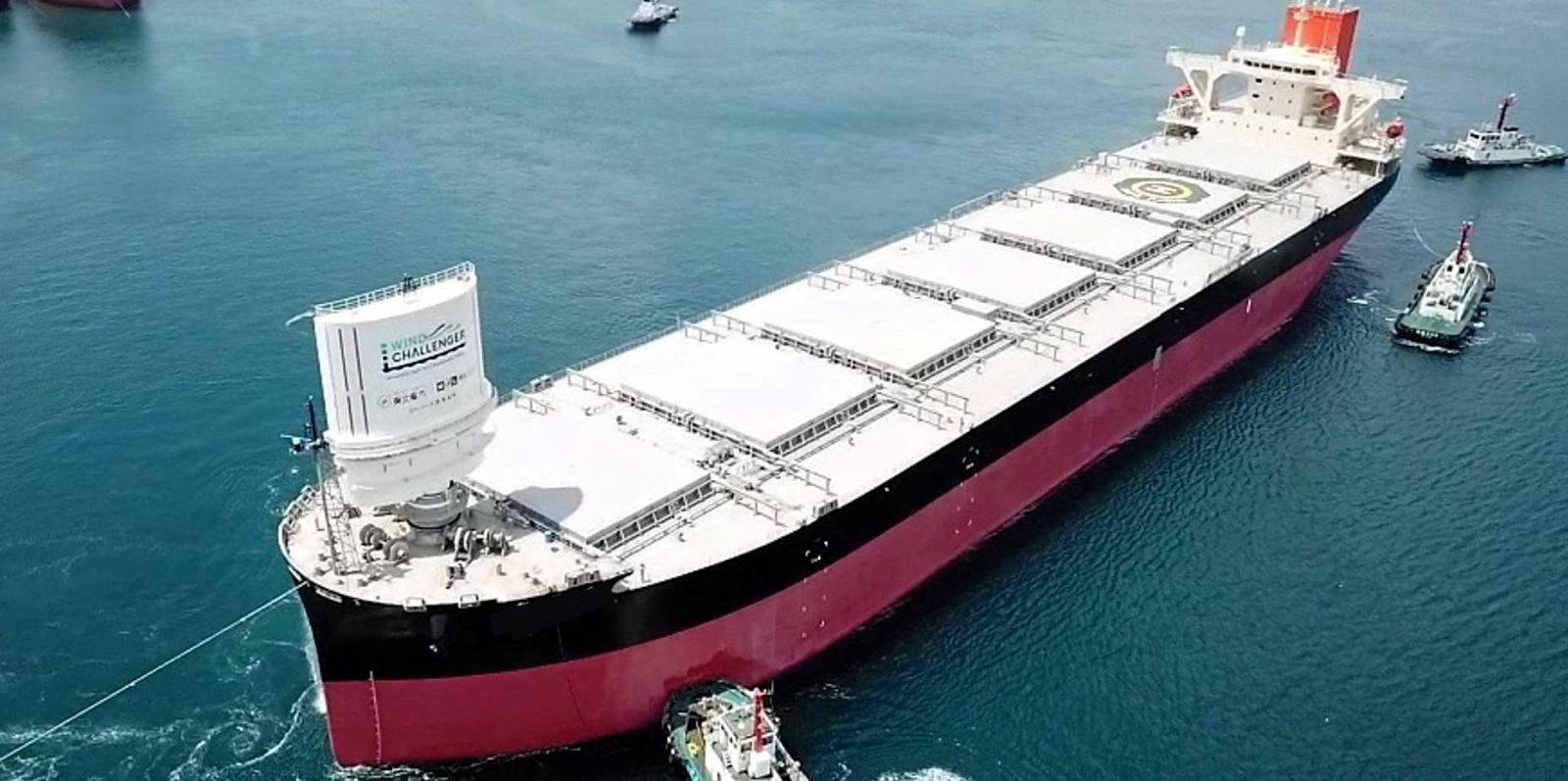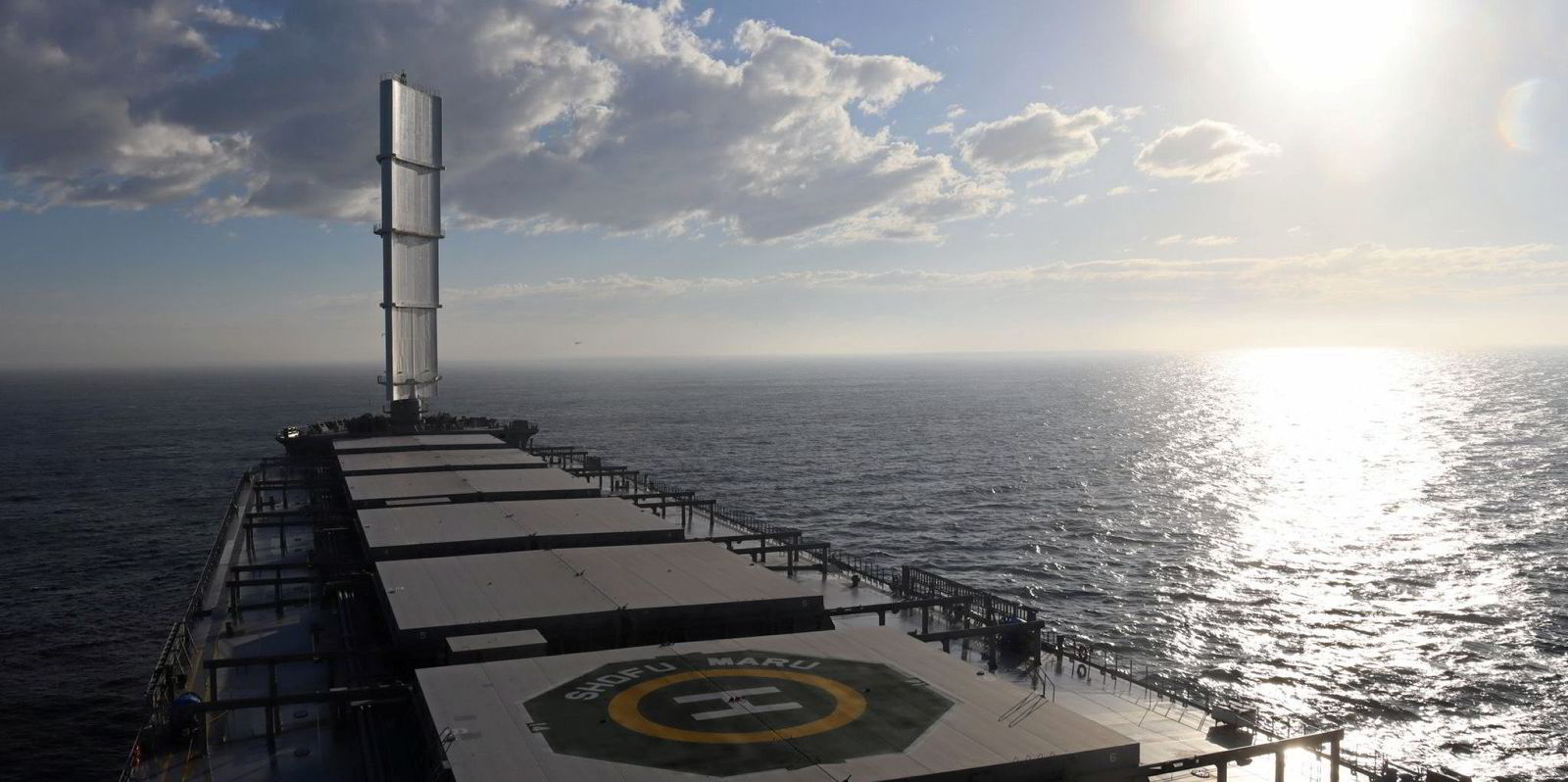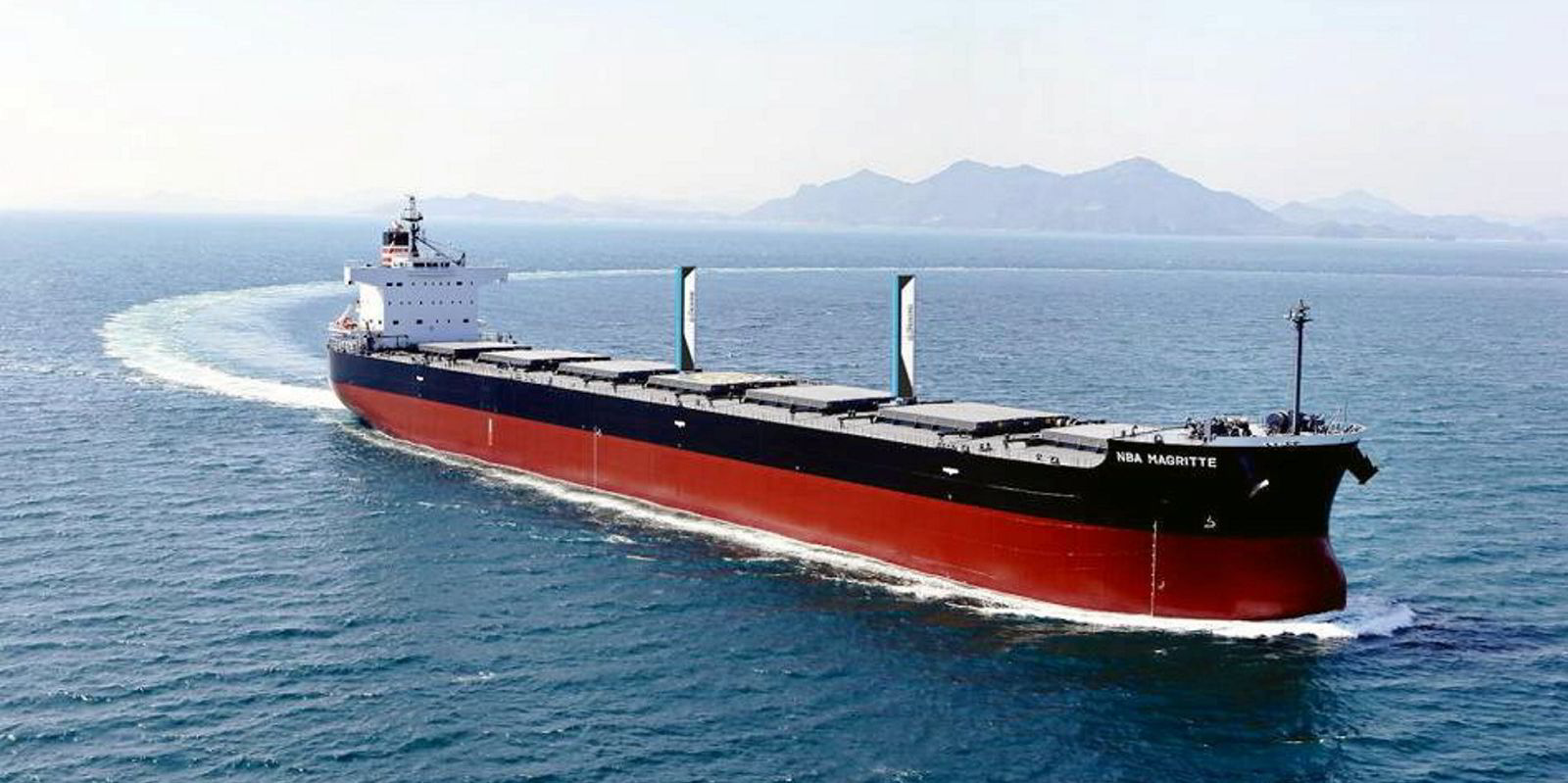Mitsui OSK Lines is to install wind propulsion systems on seven more newbuildings as it aims to have 25 vessels fitted with the technology by 2030.
The Japanese shipowner will fit six of its in-house-developed Wind Challenger systems to a series of three 42,000-dwt and three 58,000-dwt bulkers.
MOL said three vessels have been contracted at Japanese shipbuilder Oshima Shipbuilding, and preparations are underway for the remaining newbuilding contracts.
The Wind Challenger is a device developed by MOL and Oshima Shipbuilding, which converts wind energy to propulsive force using telescoping hard sails.
MOL expects each of the latest six bulkers fitted with the Wind Challenger to reduce fuel consumption and greenhouse gas emissions by an average of 7% to 16% per year from one sail.
It is also considering installing a Rotorsail, developed by UK-based Anemoi Marine Technologies, on three of the newbuildings.
MOL said the combined use of both technologies could reduce fuel and greenhouse gas emissions by an average of 15% to 28% per year.
It also plans to fit VentoFoils from Dutch maritime wind-powered technology experts Econowind to a 17,500-dwt multipurpose vessel newbuilding.
The ship, which will feature two foldable and autonomous wind propulsion units, is due for delivery in January 2025 and will operate on a time charter.
A VentFoil uses the thrust generated by the wind to propel the vessel using sails in the shape of an aeroplane wing.
The technology is already being trialled by MOL-backed liner company Ocean Network Express and on an NYK kamsarmax in partnership with trading giant Cargill.
MOL wants to achieve net zero greenhouse gas emissions by 2050, and part of its strategy includes fitting 25 vessels with the Wind Challenger technology by 2030 and 80 vessels by 2035.
With these latest installations, it will have 11 ships fitted with wind propulsion systems, nine of them with Wind Challengers.
The first MOL vessel to be fitted with the technology is the 100,422-dwt coal carrier Shofu Maru (built 2022).
Last week, the shipowner said it intended to retrofit the system to a second ship, the 89,999-dwt Kurotakisan Maru II (built 2021), on charter to J-Power.





